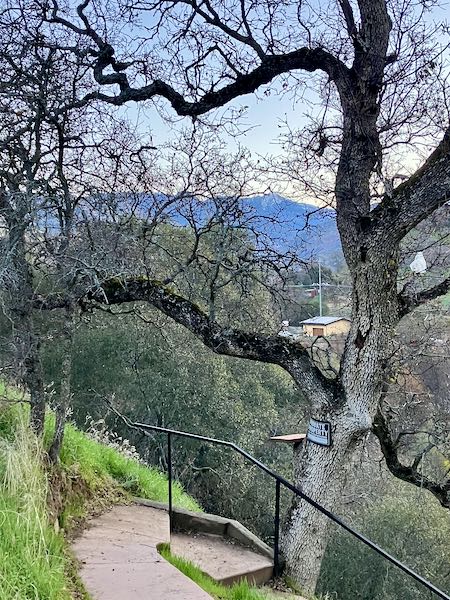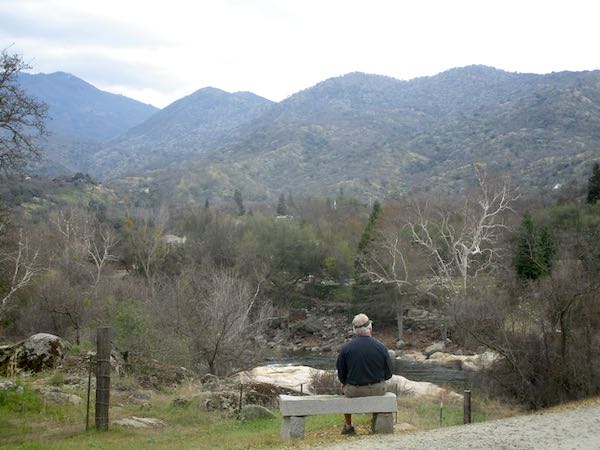A good friend, mentor, and wise man asked me if I have a relationship with my paintings. I wasn’t sure what he was seeking, so I just told him what goes through my mind while painting. Then I looked at the email conversation and thought, “Hmmm, this might be an interesting blog post”.

When I start a painting, I have photos to look at, and I copy what is there while also trying to improve on it. Move a tree, brighten a color, ignore a tangle of branches, don’t get too weird about making those rocks or cracks in the cliff perfect, increase the contrast, make that insignificant part blurry or leave it out. . . on and on and on, a continual mental conversation about how to depict a scene realistically but cleaner than real life. Real life is pretty messy, and I try to clean it up.
Often I think a painting is finished when it isn’t. It takes awhile of studying it, sometimes a couple of years, before realizing that it can be improved. This isn’t improvement to make it look more like the photo, but improvement to make it more appealing to the viewer.

My method of painting is to layer and layer, over and over, tightening the details, correcting the proportions, remixing the colors with each layer. Usually when I start, it is very sloppy, getting better with each pass over the canvas. This is similar to writing, where you tell yourself the story in the first draft. Then as you edit and rewrite, you refine your words, rearrange your paragraphs, realize that something can be misunderstood so you correct that piece, decide that something sounds foggy or stupid or unnecessary so you delete that sentence or phrase. Then you think it is done, until you look at it the next day or the next week or after you hit “Publish” and WHAM! THERE’S A TYPO! Or you wonder “why did I say that??” Or you think, “Nobody cares, why did I write this?”

I’ve never thought about it as a relationship with a painting. It is a project, separate from me. I talk myself through it, talking to myself rather than to the painting. Sure, occasionally I’ve said to a painting, “Buddy, you are toast!” just before painting it out entirely.
But the conversation is entirely to myself—“WHAT are you doing?? Stop licking the canvas! Choose the right color, get it carefully on the best brush for the job, and decide what you are doing before you just dab and jab. Okay, that is looking good, so now do it again over here. Your brush is too small and this will take forever. Whoa, I thought that part was finished and it looks really weak. Oh great, now you’ve missed entire pieces of the conversation on the podcast you are listening to because you were trying to mix a better green.”
So now you know what goes through my brain while I am painting.

With drawing, things are much easier, more automatic, and it is easier to talk to other people, or listen to a podcast while drawing. But I don’t feel as if I have a relationship with my drawings either. Many years ago I had to learn to keep emotional distance, to stop viewing them as something fabulous and irreplaceable or it would have been too hard to sell them.
And here is your reward for reading to the end of this very long post.

2 Comments
“Stop licking the canvas.” I love it! My musician friend who writes wonderful arrangements told me that his theory teacher would tell him, “Don’t fuss. Your first idea was probably the best, so write it down and stick with it!” Kind of the same thing. “Stop licking the sheet music!”
Sharon, logo design has always been a struggle for me because my first idea is usually the best. If the customer doesn’t like it, it’s all downhill from there. Maybe if I’d just “lick” the first design, it would improve. . . nah, prolly not.
Comments are closed for this article!